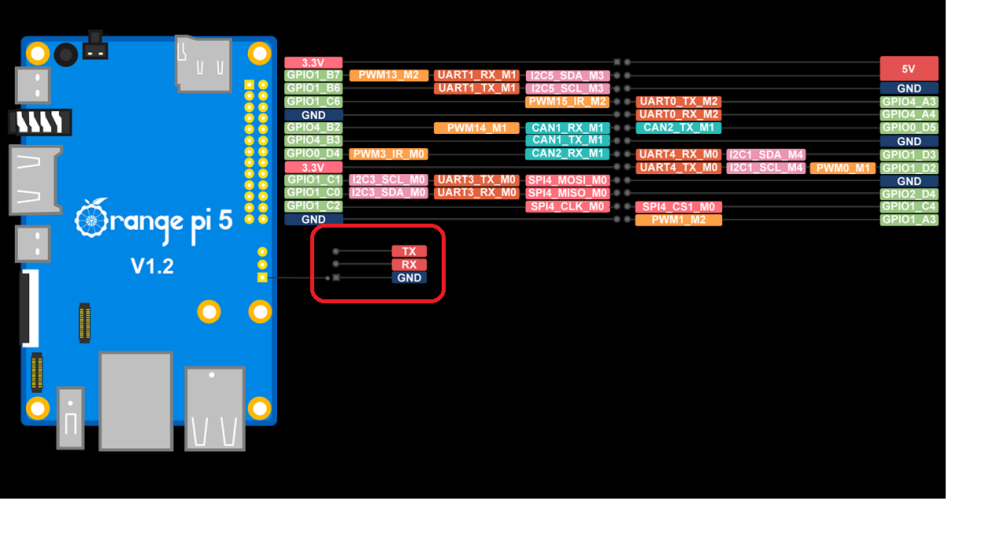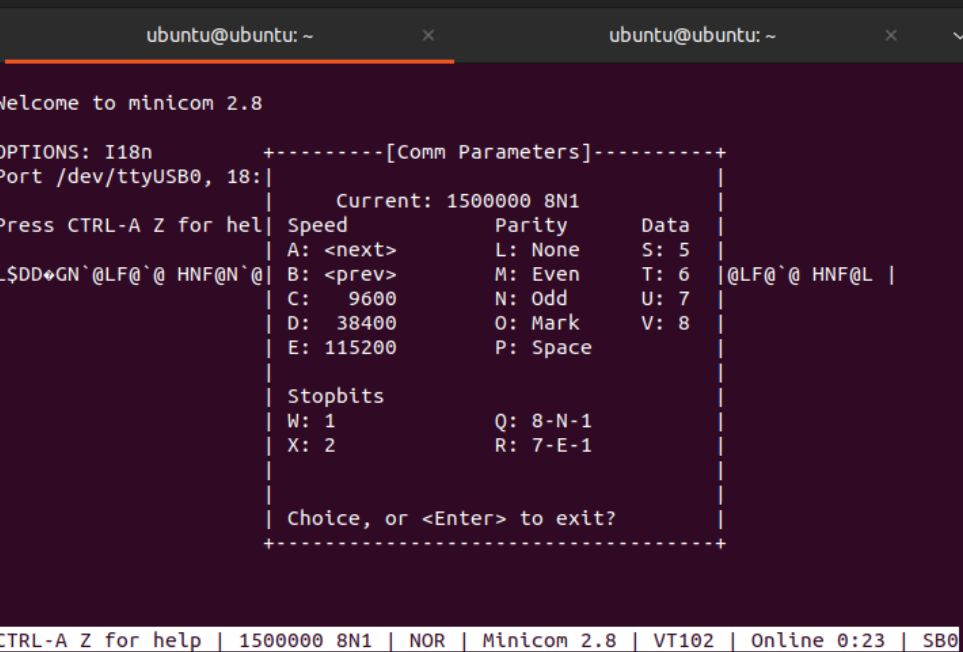Okay, so after a lot of digging i might found the reason why i am having a lot of trouble with this display and the orange pi.
I extracted edid from x64 Ubuntu (which is partiatly working, since it is also not outputing in display native mode), and it seems that the native resolution is only beeing specified in the DisplayID Extension Block and not in the Base Blocks:
cat /sys/class/drm/card0-HDMI-A-1/edid | edid-decode
edid-decode (hex):
00 ff ff ff ff ff ff 00 4c 2d 52 70 58 4a 58 43
ff ff 01 03 80 77 22 78 2a c7 25 b1 4b 46 a8 26
0e 50 54 bf ef 80 71 4f 81 00 81 c0 81 80 a9 c0
b3 00 95 00 d1 c0 1a 68 00 a0 f0 38 1f 40 30 20
3a 00 a9 50 41 00 00 1a 00 00 00 fd 00 32 4b 1e
b7 3c 00 0a 20 20 20 20 20 20 00 00 00 fc 00 4c
43 34 39 47 39 35 54 0a 20 20 20 20 00 00 00 ff
00 48 34 5a 54 31 30 31 31 34 38 0a 20 20 03 24
f0 02 70 00 00 00 00 00 00 00 00 00 00 00 00 00
00 00 00 00 00 00 00 00 00 00 00 00 00 00 00 00
00 00 00 00 00 00 00 00 00 00 00 00 00 00 00 00
00 00 00 00 00 00 00 00 00 00 00 00 00 00 00 00
00 00 00 00 00 00 00 00 00 00 00 00 00 00 00 00
00 00 00 00 00 00 00 00 00 00 00 00 00 00 00 00
00 00 00 00 00 00 00 00 00 00 00 00 00 00 00 00
00 00 00 00 00 00 00 00 00 00 00 00 00 00 00 9e
02 03 3d f1 49 90 61 60 1f 04 13 12 03 5a 23 09
07 07 83 01 00 00 e2 00 4f e3 05 c0 00 67 03 0c
00 10 00 b8 3c 67 d8 5d c4 01 78 80 03 e6 06 05
01 8b 73 12 e2 0f 06 e5 01 8b 84 90 01 56 5e 00
a0 a0 a0 29 50 30 20 35 00 a9 50 41 00 00 1a 58
4d 00 b8 a1 38 14 40 f8 2c 45 00 a9 50 41 00 00
1e 00 00 00 00 00 00 00 00 00 00 00 00 00 00 00
00 00 00 00 00 00 00 00 00 00 00 00 00 00 00 71
70 12 79 00 00 03 01 28 33 b7 00 88 ff 13 9f 00
2f 80 1f 00 9f 05 28 00 02 00 09 00 6e c2 00 08
ff 09 9f 00 2f 80 1f 00 9f 05 54 00 02 00 04 00
00 00 00 00 00 00 00 00 00 00 00 00 00 00 00 00
00 00 00 00 00 00 00 00 00 00 00 00 00 00 00 00
00 00 00 00 00 00 00 00 00 00 00 00 00 00 00 00
00 00 00 00 00 00 00 00 00 00 00 00 00 00 00 00
00 00 00 00 00 00 00 00 00 00 00 00 00 00 d6 90
----------------
Block 0, Base EDID:
EDID Structure Version & Revision: 1.3
Vendor & Product Identification:
Manufacturer: SAM
Model: 28754
Serial Number: <redacted>
Model year: 2245
Basic Display Parameters & Features:
Digital display
Maximum image size: 119 cm x 34 cm
Gamma: 2.20
DPMS levels: Off
RGB color display
First detailed timing is the preferred timing
Color Characteristics:
Red : 0.6943, 0.2929
Green: 0.2744, 0.6591
Blue : 0.1484, 0.0566
White: 0.3134, 0.3291
Established Timings I & II:
IBM : 720x400 70.081663 Hz 9:5 31.467 kHz 28.320000 MHz
DMT 0x04: 640x480 59.940476 Hz 4:3 31.469 kHz 25.175000 MHz
Apple : 640x480 66.666667 Hz 4:3 35.000 kHz 30.240000 MHz
DMT 0x05: 640x480 72.808802 Hz 4:3 37.861 kHz 31.500000 MHz
DMT 0x06: 640x480 75.000000 Hz 4:3 37.500 kHz 31.500000 MHz
DMT 0x08: 800x600 56.250000 Hz 4:3 35.156 kHz 36.000000 MHz
DMT 0x09: 800x600 60.316541 Hz 4:3 37.879 kHz 40.000000 MHz
DMT 0x0a: 800x600 72.187572 Hz 4:3 48.077 kHz 50.000000 MHz
DMT 0x0b: 800x600 75.000000 Hz 4:3 46.875 kHz 49.500000 MHz
Apple : 832x624 74.551266 Hz 4:3 49.726 kHz 57.284000 MHz
DMT 0x10: 1024x768 60.003840 Hz 4:3 48.363 kHz 65.000000 MHz
DMT 0x11: 1024x768 70.069359 Hz 4:3 56.476 kHz 75.000000 MHz
DMT 0x12: 1024x768 75.028582 Hz 4:3 60.023 kHz 78.750000 MHz
DMT 0x24: 1280x1024 75.024675 Hz 5:4 79.976 kHz 135.000000 MHz
Apple : 1152x870 75.061550 Hz 192:145 68.681 kHz 100.000000 MHz
Standard Timings:
DMT 0x15: 1152x864 75.000000 Hz 4:3 67.500 kHz 108.000000 MHz
DMT 0x1c: 1280x800 59.810326 Hz 16:10 49.702 kHz 83.500000 MHz
DMT 0x55: 1280x720 60.000000 Hz 16:9 45.000 kHz 74.250000 MHz
DMT 0x23: 1280x1024 60.019740 Hz 5:4 63.981 kHz 108.000000 MHz
DMT 0x53: 1600x900 60.000000 Hz 16:9 60.000 kHz 108.000000 MHz (RB)
DMT 0x3a: 1680x1050 59.954250 Hz 16:10 65.290 kHz 146.250000 MHz
DMT 0x2f: 1440x900 59.887445 Hz 16:10 55.935 kHz 106.500000 MHz
DMT 0x52: 1920x1080 60.000000 Hz 16:9 67.500 kHz 148.500000 MHz
Detailed Timing Descriptors:
DTD 1: 3840x1080 59.968497 Hz 32:9 66.625 kHz 266.500000 MHz (1193 mm x 336 mm)
Hfront 48 Hsync 32 Hback 80 Hpol P
Vfront 3 Vsync 10 Vback 18 Vpol N
Display Range Limits:
Monitor ranges (GTF): 50-75 Hz V, 30-183 kHz H, max dotclock 600 MHz
Display Product Name: 'LC49G95T'
Display Product Serial Number: <redacted>
Extension blocks: 3
Checksum: 0x24
----------------
Block 1, Block Map Extension Block:
Block 2: CTA-861 Extension Block
Block 3: DisplayID Extension Block
Checksum: 0x9e
----------------
Block 2, CTA-861 Extension Block:
Revision: 3
Underscans IT Video Formats by default
Basic audio support
Supports YCbCr 4:4:4
Supports YCbCr 4:2:2
Native detailed modes: 1
Video Data Block:
VIC 16: 1920x1080 60.000000 Hz 16:9 67.500 kHz 148.500000 MHz (native)
VIC 97: 3840x2160 60.000000 Hz 16:9 135.000 kHz 594.000000 MHz
VIC 96: 3840x2160 50.000000 Hz 16:9 112.500 kHz 594.000000 MHz
VIC 31: 1920x1080 50.000000 Hz 16:9 56.250 kHz 148.500000 MHz
VIC 4: 1280x720 60.000000 Hz 16:9 45.000 kHz 74.250000 MHz
VIC 19: 1280x720 50.000000 Hz 16:9 37.500 kHz 74.250000 MHz
VIC 18: 720x576 50.000000 Hz 16:9 31.250 kHz 27.000000 MHz
VIC 3: 720x480 59.940060 Hz 16:9 31.469 kHz 27.000000 MHz
VIC 90: 2560x1080 60.000000 Hz 64:27 66.000 kHz 198.000000 MHz
Audio Data Block:
Linear PCM:
Max channels: 2
Supported sample rates (kHz): 48 44.1 32
Supported sample sizes (bits): 24 20 16
Speaker Allocation Data Block:
FL/FR - Front Left/Right
Video Capability Data Block:
YCbCr quantization: No Data
RGB quantization: Selectable (via AVI Q)
PT scan behavior: No Data
IT scan behavior: Supports both over- and underscan
CE scan behavior: Supports both over- and underscan
Colorimetry Data Block:
BT2020YCC
BT2020RGB
Vendor-Specific Data Block (HDMI), OUI 00-0C-03:
Source physical address: 1.0.0.0
Supports_AI
DC_36bit
DC_30bit
DC_Y444
Maximum TMDS clock: 300 MHz
Vendor-Specific Data Block (HDMI Forum), OUI C4-5D-D8:
Version: 1
Maximum TMDS Character Rate: 600 MHz
SCDC Present
Supports 12-bits/component Deep Color 4:2:0 Pixel Encoding
Supports 10-bits/component Deep Color 4:2:0 Pixel Encoding
HDR Static Metadata Data Block:
Electro optical transfer functions:
Traditional gamma - SDR luminance range
SMPTE ST2084
Supported static metadata descriptors:
Static metadata type 1
Desired content max luminance: 139 (1015.241 cd/m^2)
Desired content max frame-average luminance: 115 (603.666 cd/m^2)
Desired content min luminance: 18 (0.051 cd/m^2)
YCbCr 4:2:0 Capability Map Data Block:
VIC 97: 3840x2160 60.000000 Hz 16:9 135.000 kHz 594.000000 MHz
VIC 96: 3840x2160 50.000000 Hz 16:9 112.500 kHz 594.000000 MHz
Vendor-Specific Video Data Block (HDR10+), OUI 90-84-8B:
Application Version: 1
Detailed Timing Descriptors:
DTD 2: 2560x1440 59.950550 Hz 16:9 88.787 kHz 241.500000 MHz (1193 mm x 336 mm)
Hfront 48 Hsync 32 Hback 80 Hpol P
Vfront 3 Vsync 5 Vback 33 Vpol N
DTD 3: 2560x1080 60.000000 Hz 64:27 66.000 kHz 198.000000 MHz (1193 mm x 336 mm)
Hfront 248 Hsync 44 Hback 148 Hpol P
Vfront 4 Vsync 5 Vback 11 Vpol P
Checksum: 0x71
----------------
Block 3, DisplayID Extension Block:
Version: 1.2
Extension Count: 0
Display Product Type: Extension Section
Video Timing Modes Type 1 - Detailed Timings Data Block:
DTD: 5120x1440 59.976879 Hz 0:0 88.826 kHz 469.000000 MHz (aspect undefined, no 3D stereo, preferred)
Hfront 48 Hsync 32 Hback 80 Hpol P
Vfront 3 Vsync 10 Vback 28 Vpol N
DTD: 2560x1440 119.997589 Hz 0:0 182.996 kHz 497.750000 MHz (aspect undefined, no 3D stereo)
Hfront 48 Hsync 32 Hback 80 Hpol P
Vfront 3 Vsync 5 Vback 77 Vpol N
Checksum: 0xd6
Checksum: 0x90
When i connect the display to orange pi and check the modes in /sys/class/drm/card0-DP-1/modes , i can only find the modes that match the Block 0 and none from the DisplayID block from edid.
So the question is, is kernel configured to check the DisplayID block from edid?
Is kernel compiled with CONFIG_DRM_LOAD_EDID_FIRMWARE ?
P.S. - I think i might be hitting a problem that might be above Armbian and maybe kernel / rockchip (?) related. If so, do you know where can i seek for further help?
Once Again, Thank You for your support and hard work



